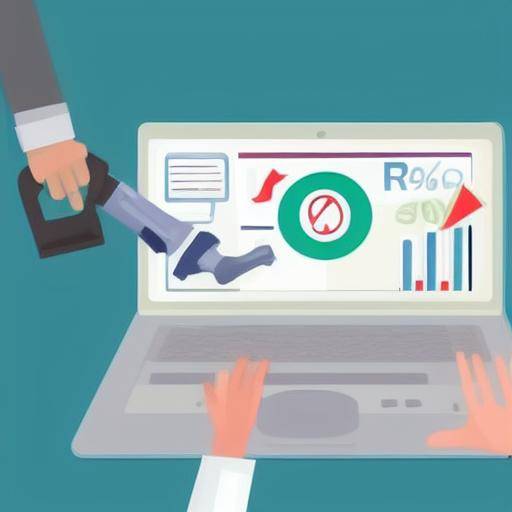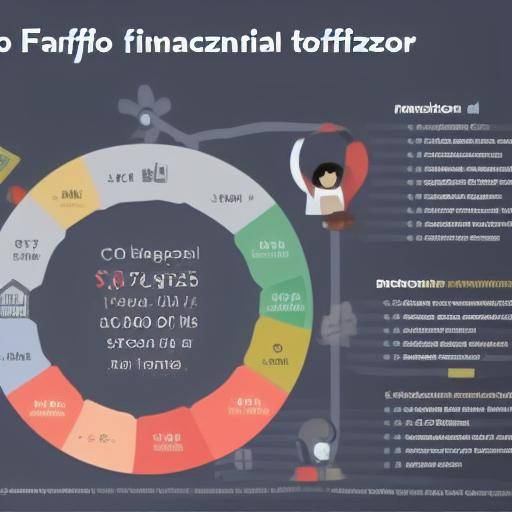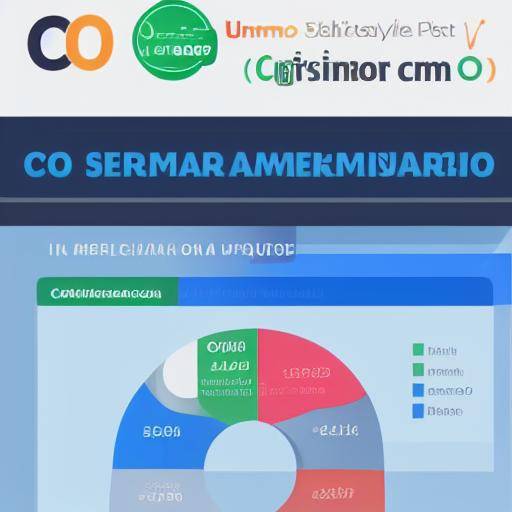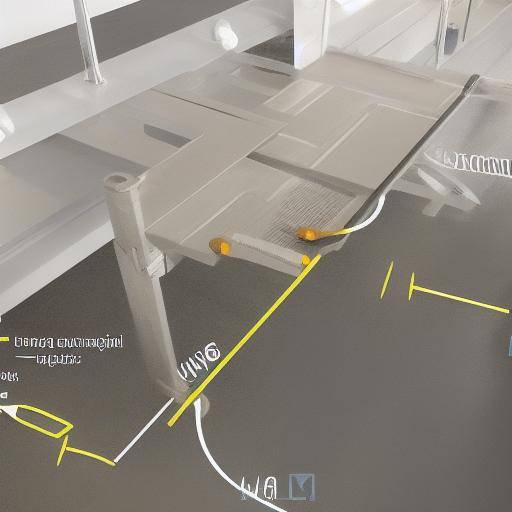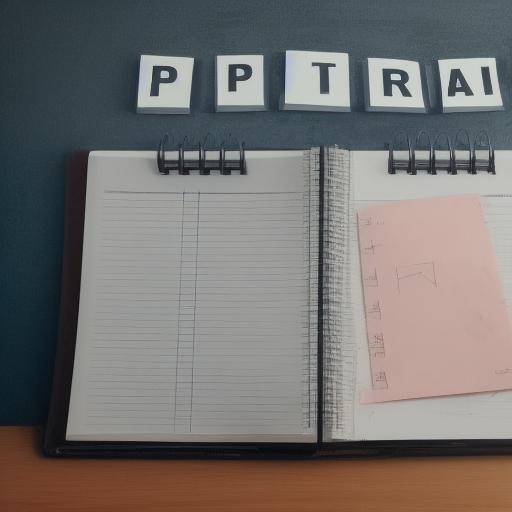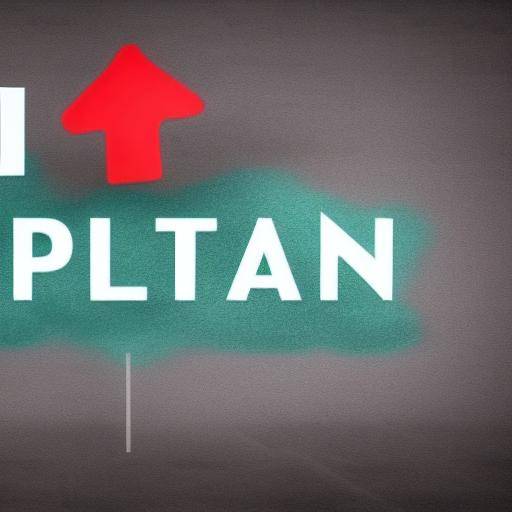
In the current era, it is common for many people to be in debt situations. Whether for reasons of education, housing, health or day-to-day expenses, debts can become a significant financial burden if they are not properly handled. That is why having a plan to repay debts becomes crucial to regain control of personal finance and achieve economic stability. In this article, we will explore in detail the importance of having a payment plan, strategies to manage debts and best practices to strengthen personal finance. Join us on this journey to financial freedom.
Introduction
The word "debt" usually carries a negative burden, and it is not surprising. Debts can generate stress, anxiety and limitations in everyday life. However, it is important to understand that debts alone are not inherently bad; the problem lies in the inability to manage them effectively. Having a plan to pay debts is the first step in changing the perspective on the financial situation and moving towards stability.
History and Background
To understand the importance of having a plan to pay debts, it is essential to analyse the historical evolution of debt. From the first forms of trade to the contemporary credit system, debts have been a constant in the evolution of societies. In the past, indebtedness was limited to smaller circles, but with the emergence of the modern economy, debts have become a crucial component of everyday life.
The Surgment of Debt
The practice of lending and borrowing dates from ancient times, being a pillar of economic exchange even before the establishment of formal currencies and financial systems. Mesopotamian, Greek and Roman civilizations already had debt and loan structures, laying the foundations for the current credit system.
The Industrial Revolution and the Rise of Indebtedness
With the arrival of the Industrial Revolution, economic opportunities multiplied, but financial demands also did. Access to credit expanded, allowing individuals and businesses to invest in growth opportunities. This era marked a significant change in the perception of debts, from being seen as a drag to being considered as a tool to achieve economic goals.
The Modern Age and the Financial Complexity
The twentieth century brought with it the development of advanced financial systems, including credit cards, mortgage loans and complex financial instruments. This complexity allowed even greater access to credit, but also generated additional challenges in terms of financial management.
Detailed Analysis
Benefits of Having a Debt Pay Plan
A plan to pay debts not only involves reducing the balance owed, but also entails significant long-term financial health benefits. Some key advantages include:
- Reduction of financial stress: By having a clear and structured plan, uncertainty and debt-related anxiety are reduced, allowing better emotional and mental management.
- Saving interest: An effective plan can involve debt refinancing at lower rates, which in turn reduces the total cost of debt.
- Improved credit history: By demonstrating a strong commitment to debt payments, credit history is strengthened, which can facilitate access to future loans or credits.
Challenges in Debt Management
Despite the benefits, debt management entails significant challenges that need to be addressed carefully and strategically. Some common challenges include:
- Lifestyle Adjustment: In many cases, a debt-paying plan may require lifestyle adjustments and personal spending to allocate more income to the settlement of outstanding debts. This change in financial habits can be challenging for some people.
- Maintenance of discipline: Following a long-term plan requires discipline and commitment. Staying on the established path can be difficult, especially when unforeseen or tempting arises to deviate from the plan.
- Negotiation with creditors: In cases of significant debts, negotiation with creditors may be necessary. This process can be complex and require communication and negotiation skills.
Detail
Effective Strategies for Debt Payment
There are multiple strategies that can be used to effectively address debts, each with its own advantages and considerations. Some of these strategies include:
Consolidation of debts
Debt consolidation involves combining multiple debts into a single loan or credit line. This can simplify payments and, in some cases, reduce the total interest rate on debts.
Gradual Payment Plan
A gradual approach to the payment of debts implies prioritizing debts according to their interest rate or size, assigning a fixed portion of income to the cancellation of each debt, starting with the most expensive debts.
Negotiation of Terms with Creditors
In situations of financial difficulty, direct negotiation with creditors may result in more favourable agreements, such as reduction of interest rate, extensions of time or even reduction of the principal amount owed.
Use of Specialized Financial Tools
Financial tools and resources are specifically designed to assist in debt management, such as cost tracking, credit advice and financial advisory services.
Opinions of Current Experts and Trends
According to financial experts, careful planning and discipline are critical to achieving success in debt payments. Current trends also indicate an increase in the approach to financial education and proactive debt management as a means of avoiding the spiral of indebtedness.
Comparative analysis
The payment plan, debt management and personal finance are intrinsically related, and each plays a crucial role in achieving financial stability. Below is a comparative analysis of these elements:
Payment Plan vs. Debt management
- The payment plan focuses on structuring and organizing debt cancellation, while debt management encompasses a broader approach including negotiation, restructuring and monitoring of outstanding debts.
- The payment plan is a specific tool within the management of debts, being essential to establish clear goals and effective liquidation strategies.
Debt Management vs. Personal finance
- Debt management focuses on the active and strategic management of financial obligations, while personal finances cover a broader picture including income, expenditure, savings and investment.
- While debt management is a crucial component of personal finance, the latter implies a comprehensive and long-term view of the personal economic situation.
Payment Plan vs. Personal finance
- A payment plan is a specific tool within the framework of personal finance, while personal finances include planning, organizing and making decisions related to all financial aspects of an individual or family.
Practical Tips and Accessible Strategies
In facing debts and planning their payment, it is essential to have practical and actionable strategies. Some useful tips include:
- Prioritize the payment of debts with higher interest rates to reduce the total cost.
- Negotiate with creditors payment deadlines that meet the debtor ' s financial capacity.
- Use budget and expenditure tracking tools to keep a thorough control of personal finances.
- Avoid acquiring new debts while in the process of payment of existing ones, maintaining a disciplined approach in managing revenues and expenses.
Conclusions and FAQs
Conclusions
The establishment of a debt payment plan is a cornerstone in the construction of a solid financial base. By adopting strategic approaches, being open to negotiation and maintaining a disciplined attitude, it is possible to overcome debts and regain control of the financial situation. Financial responsibility and debt management education are fundamental to achieving long-term economic stability.
Frequently asked questions
Is it advisable to apply for a loan to pay accumulated debts?
The request for a loan to pay debts can be a valid strategy in certain circumstances, especially if the new loan offers more favorable conditions, reducing the total cost of debts.
What is the main difference between a payment plan and debt refinancing?
A payment plan focuses on organizing and structuring existing debt cancellation, while refinancing involves obtaining a new loan or credit line to pay the existing debts, usually with more favorable conditions.
How can I avoid falling into the debt trap again once I have paid the current ones?
In order to avoid relapse into debt accumulation, it is crucial to maintain good financial habits, such as budget planning, regular savings and prudent use of credit. Financial education and discipline are fundamental in this regard.
How long is it required to leave significant debts with an effective payment plan?
The time required to leave debts depends on various factors, such as the amount of debt, the conditions of the payment plan, the financial capacity of the debtor and the effectiveness in the implementation of the plan. In general, consistency and discipline are key to achieving success.
When is it advisable to seek professional financial advice in debt management?
It is advisable to seek professional financial advice when faced with significant difficulties in managing debts, considering consolidation or refinancing strategies, or planning in the long term to avoid similar situations in the future.
What is the long-term impact of a positive credit history on debt management?
A positive credit history can facilitate future loans and even provide more favourable conditions in terms of interest rates and credit limits. This can contribute to more effective debt management and longer-term financial stability.
Conclusion
Accounting with a debt-paying plan is fundamental on the way to financial stability. Proactive debt management, the establishment of effective strategies and discipline in the management of personal finances are pillars that will enable people to overcome debts and regain control of their economic situation. Financial education and the search for specialized advice are key aspects of this process, providing tools and knowledge needed to build a sound and lasting financial base.





